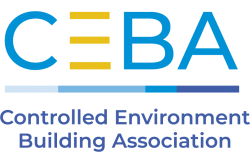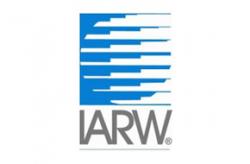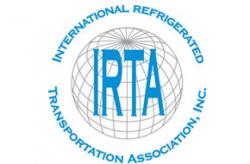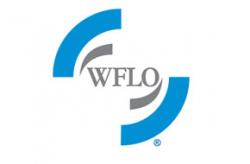Engaging Employees To Strengthen Safety Programs
Recognize facility differences and involve all employees.
There are few people in the cold chain who do not understand the importance of safety but keeping safety programs fresh and appealing to employees is a constant challenge for safety and compliance teams.
Five steps that enhance the engagement of employees in safety efforts and create a successful, sustainable program are:
1. Create a culture of safety.
2. Have leaders who champion safety.
3. Positively reinforce safe practices.
4. Allow employees to actively participate in development and implementation of programs.
5. Use employee feedback to improve safety programs.
Two companies – United States Cold Storage and Lineage Logistics – have relied on these five principles to develop engaging, effective safety programs that work in all facilities across their company.
Friendly Competition Encourages Workplace Pride
One of the more difficult challenges for safety directors is engaging employees in safety programs that may not be required by regulators, says Lisa Battino, Vice President of Compliance and Safety at United States Cold Storage Inc. “We have a lot of required programs due to regulations, but we also implement programs that help reduce incidents and enhance the safety of our workplace,” she says. Because these best practices are not mandated by regulations, Battino’s team is always looking for ways to encourage sustained adherence to safety protocols by engaging employees and emphasizing their importance.
Off to the Races
“Fun” is the approach United States Cold Storage took to engage employees companywide in all safety programs. The “Innovators Grand Prix, The Race to Safety” contest awards points to facilities for promoting health and safety while increasing employee engagement. Fork trucks representing each facility on the contest’s racetrack dashboard move forward based on points earned for safety and health activities. Quarterly winners for each track – 2020 tracks were defined as the company’s four regions, but 2021 tracks were changed to four size categories – are named with the overall winner, based on annual cumulative points, at the end of the year. “The points are reset at the end of each quarter, so every facility has a chance to win the next quarter, because we did not want to discourage a facility that had low points one quarter to give up,” Battino explains. “We changed the definitions of the tracks in 2021 due to feedback from smaller facilities that may not have the resources to implement as many programs as larger facilities.” The 2021 Innovators Grand Prix has a small, medium, large and extra large track to group similarly-sized facilities together.
Flex Points
There is a lot of flexibility in the approach that each facility can take to earn points. A list of best practices along with points that can be earned for each activity is provided, and facility leadership and employees choose how they will earn points and even suggest some of their own ideas. Some ideas include health-focused goals such as lunchtime walking groups or a weight-loss challenge, and other ideas relate to workplace safety such as stretching classes that are specific to tasks performed. “If a facility has a stretching period every morning prior to the beginning of the shift, a photo is uploaded to document the activity, and points are awarded,” says Battino. “We also award points for supervisors who observe performing an activity incorrectly – such as not lifting with your legs – then coach the employee on the correct procedure.”
Going Beyond
Some required activities do earn points, such as holding required safety meetings and submitting minutes on time. But even with safety meetings, there is an opportunity to go beyond what is required. Because general managers are not required to attend monthly safety meetings, extra points are earned if the GM attends. Another example of going beyond what is required are monthly self-audits by warehouse personnel for different food safety practices. “Even though following guidelines is required to maintain certification, the monthly selfaudits are an additional assurance to our customers that we are continually monitoring our performance to protect their product,” Battino adds.
There is, however, one performance indicator that does not earn points. “No one gets points for not having an injury because the purpose of the program is to proactively prevent injuries through best practices,” says Battino. If all employees are actively engaged in promoting health and safety in the workplace, incidents naturally decrease, which was proven in the first two years of the Grand Prix, she says. “In 2020, the top 50% of point earners collectively reduced lost-time injury rates by 76% compared to the other facilities, and in 2021 the top 50% has seen 44% fewer lost-time injuries.” Changes to the contest will continue to be made based on feedback from general managers, safety team members and employees, says Battino. “In fact, this year we developed Slam-Dunk, a small tablet that fits in everyone’s pocket with a form that can be used quickly to document unsafe conditions and employee proactive improvements,” she says. “We also had one annual winner who won a large celebration at their facility in 2020, but 2021 has three winners – a grand prize winner and second and third place winners who will have smaller celebrations at their facilities.” The success of the Innovators Grand Prix is a mix of healthy competition and a focus on proactive practices, Battino says. “Our crew members are more engaged and passionate about safety, and the program creates a sense of pride in their facility and their workplace,” she explains. “This pride leads to a safer, cleaner, more efficient facility, which means better service to our customers.”
Cross-functional Teams Build Engagement
One way to ensure employee engagement in safety programs is to design the program with input from areas for whom the class, training or safety protocol is being developed, says Dominic DiCarlo, Vice President of Safety and Compliance at Lineage Logistics. “We use cross-functional teams that include the warehouse floor, maintenance and operations to develop our programs because they better understand how a specific regulation or safety protocol can be implemented in the field,” DiCarlo says. “We also look across the company to see how implementation might differ from location to location based on the specific facility.”
One Size Does Not Fit All
Considering different facilities when developing a safety program is necessary to avoid creating a protocol that is overly prescriptive. A facility should have the opportunity to tailor the safety program to its specific situation while still meeting the goal of the program. “A good example is our requirement that steps be taken to prevent a truck at the dock for offloading or loading from moving before the process is complete and all warehouse employees are away from the truck,” says DiCarlo. “Initially, we had one standard way to prevent that from happening. But as we grew, facilities that we acquired or built had different capabilities.” Although some facilities had dock locks, others used wheel chucks, locked brakes, took keys from drivers or locked the truck.
“We realized that we could not produce a one-sizefits-all policy and still get buy-in for the safety program because there was no way to make a global policy that worked in all situations,” he says. Creating a program that used a standard method to prevent a truck from moving, offering facilities options and allowing tweaks approved by the safety department still accomplished the goal across the company, while getting buy-in from all facilities. Offering options when possible creates a stronger trust between team members and safety personnel that leads to stronger engagement in safety programs, says DiCarlo. “There are some regulations that don’t provide flexibility, and we explain that to team members,” he says. “If we have built good relationships, then people trust us when we say that we can’t be flexible.”
Self-Sustaining Safety
With 385 locations around the globe and a safety staff of only 50 people, DiCarlo’s team relies on onsite personnel to implement and sustain safety programs. “Our behavior-based safety program relies on key performance indicators that set expectations, along with routine audits and observations of employee actions,” he explains. “Peers are ensuring ongoing compliance, rather than outside observers.” When DiCarlo’s department conducts safety inspections that include members of the safety and compliance team, people from facilities other than the one being audited are included on the team. “We’ll take warehouse employees from other locations to help us perform inspections,” says DiCarlo. The inclusion of facility staff in inspections accomplishes several goals. First, warehouse floor activities are reviewed by someone who works on a warehouse floor, which adds credibility to the inspection. Plus, inspectors share best practices from their own experience with the facility being inspected. “We also find it is an educational experience for the employees who join the inspection team because they have an opportunity to observe and learn new best practices,” DiCarlo adds. In addition to making safety programs and protocols flexible, it is also important to make them dynamic to allow for updates as information changes, suggests DiCarlo.
COVID in Real Time
A good example of a dynamic program is the COVID playbook developed by a crossfunctional team at Lineage. “At first, there was not a lot of flexibility because no one was sure about how the virus was transmitted so we followed health official guidance closely,” DiCarlo explains. As time progressed and more feedback, data and science became available, the protocols became more dynamic and were continuously revised to reflect new situations. “You cannot just create a process and stop – it must be constantly revised and updated.” In every annual review of safety programs, employees are engaged with cross-functional development teams, employee inclusion in inspection teams and safety discussions at every level of leadership, says DiCarlo. “Although my department’s customers are our employees, we also ensure good customer service to our other stakeholders by ensuring that our safety protocols don’t result in a situation that impacts a customer’s product, delivery schedule and bottom line.”
SHERYL S. JACKSON is a freelance writer based in Alpharetta, Georgia, who specializes in industry issues and trends.
EMAIL: sherylsjackson@bellsouth.net



